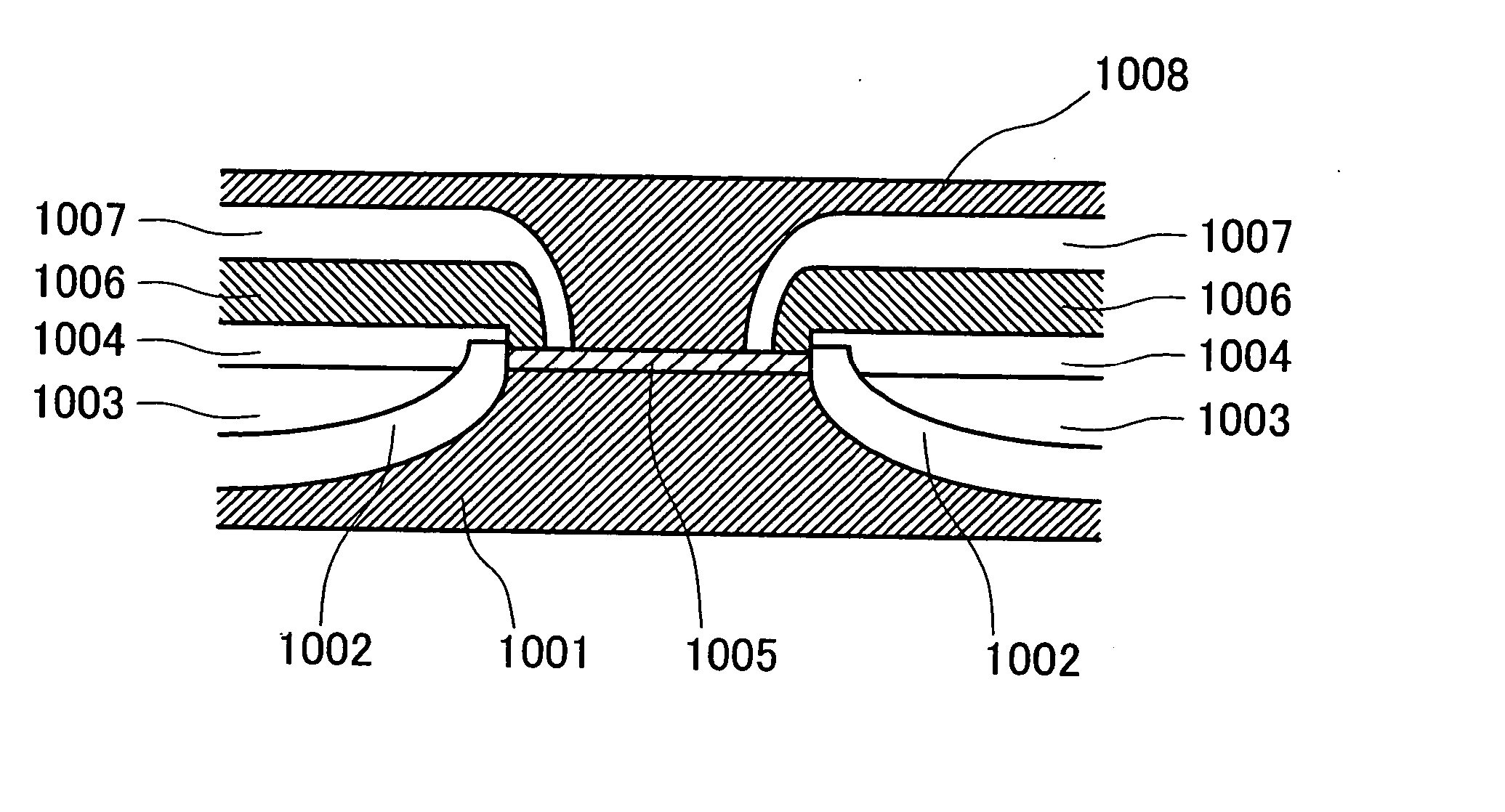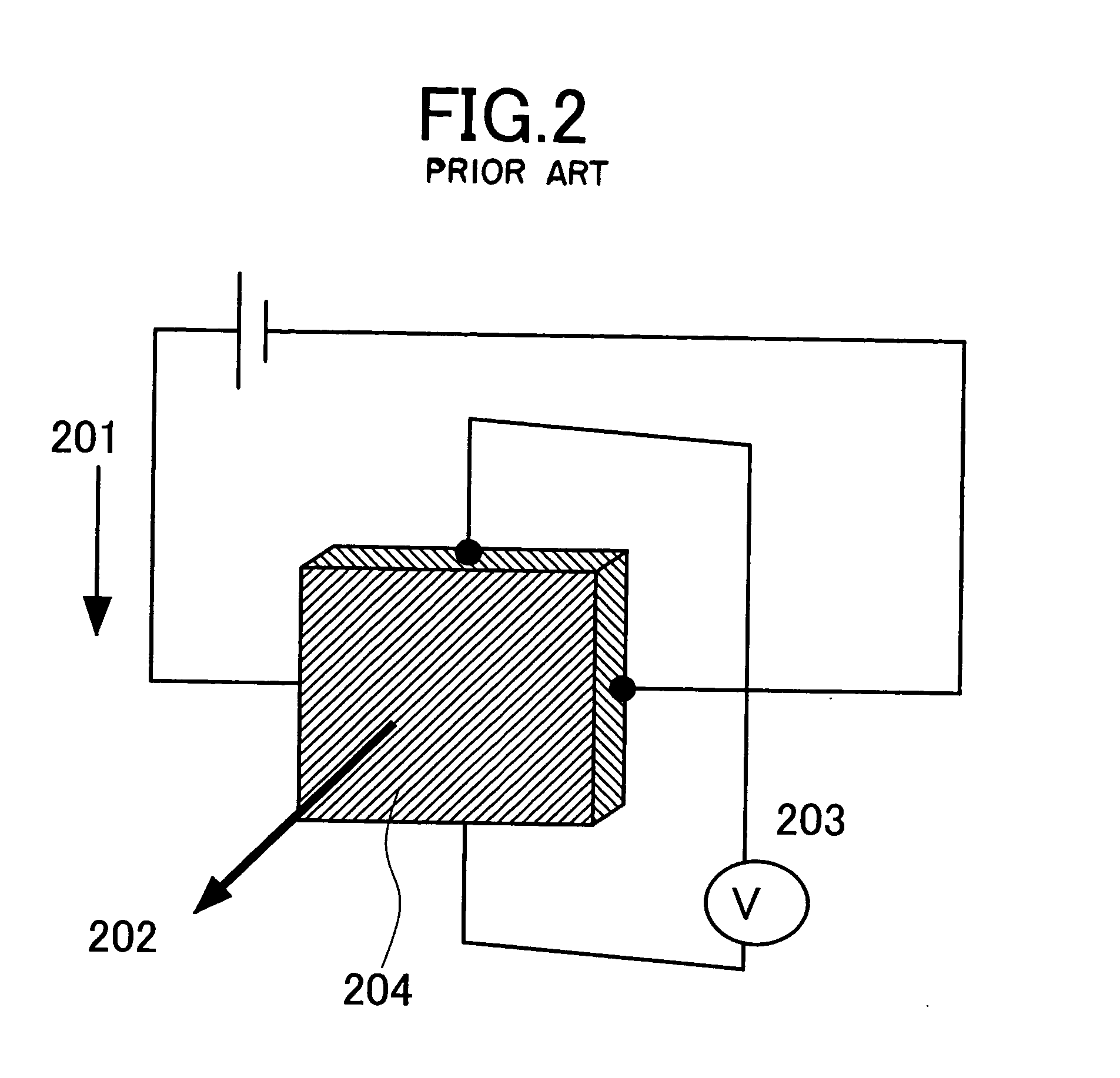Magnetic field sensor utilizing anomalous hall effect magnetic film
a magnetic film and magnetic field technology, applied in the direction of instruments, galvano-magnetic hall-effect devices, record information storage, etc., can solve the problems of inability to secure predetermined magnetization ratios, fluctuation of magnetization, and difficulty in recording devices to produce sufficient recording magnetic fields, etc., to enhance the efficiency of magnetic field concentration, the effect of reducing the loss and reducing the loss
- Summary
- Abstract
- Description
- Claims
- Application Information
AI Technical Summary
Benefits of technology
Problems solved by technology
Method used
Image
Examples
embodiment 1
FIG. 2 is a schematic view showing a conventional thin film Hall generator, and a conventional thin film magnetic field sensor utilizing a Hall effect. FIG. 2 constitutes the magnetic field sensor which applies a phenomenon in which electromotive force is generated in a direction 203 perpendicular to both of an in-plane direction 201 and a film thickness direction 202 when a current is supplied to the direction 201 and a magnetic field is applied to the direction 202, and the magnetic field sensor measures an intensity of the magnetic filed applied to the film plane as the electromotive force. As a material constituting the thin film Hall generator, nonmagnetic semiconductors such as GaAs, InAs and InSb which offer a nature that a magnetic field and a voltage are in proportion to each other in a wide range of the magnetic field have been reported and widely put into practical use.
On the contrary, the magnetic field sensor of the present invention has a constitution, for example, a...
embodiment 2
A device of an embodiment 2 was fabricated in the following manner. Specifically, more than two devices having the structure of FIG. 3 or FIG. 4, each having the same shape and the same size, are disposed so that output terminals thereof are arranged in series and at least one current introduction terminal allows a current to flow in a direction inverse to those of other current introduction terminals.
FIG. 8 shows an example of the device of the embodiment 2, and is a principle diagram of the magnetic field sensor in which the two magnetic field sensors having the same structure, the same size and the same shape as those of FIG. 3 are arranged, the output terminals (301) in plane are arranged in series, and the current terminals (302) are arranged so that the current 802 flows in series in film thickness directions opposite to each other. A material of a sensor film is the same as that described in the embodiment 1. Moreover, in terms of the device structure, one terminal of the c...
embodiment 3
A case where the magnetic field sensor of the present invention is applied to a magnetic reading head will be described. A film containing ferromagnetic which causes an anomalous Hall effect used for the magnetic field sensor has, for example, a film structure as shown in FIG. 6, and has a structure described in the embodiment 1. A film thickness is set to an appropriate value ranging from 1 to 100 nm for the sake of an application of the magnetic field sensor to the reading head and for the sake of a practical output. In the case of this embodiment, a film having a thickness of 15 nm was used. Without depending on whether a structure, in which a sensor called an in-gap type is sandwiched between shields, is a head structure having a shape exposed to a plane opposite to the medium or a head structure in which a sensor called a yoke structure is not exposed and the sensor is disposed inside the yoke formed of C-character shaped soft magnetic, the magnetic reading head structure usin...
PUM
| Property | Measurement | Unit |
|---|---|---|
| magnetic | aaaaa | aaaaa |
| Hall effect | aaaaa | aaaaa |
| magnetic field | aaaaa | aaaaa |
Abstract
Description
Claims
Application Information
 Login to View More
Login to View More - R&D
- Intellectual Property
- Life Sciences
- Materials
- Tech Scout
- Unparalleled Data Quality
- Higher Quality Content
- 60% Fewer Hallucinations
Browse by: Latest US Patents, China's latest patents, Technical Efficacy Thesaurus, Application Domain, Technology Topic, Popular Technical Reports.
© 2025 PatSnap. All rights reserved.Legal|Privacy policy|Modern Slavery Act Transparency Statement|Sitemap|About US| Contact US: help@patsnap.com



